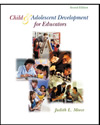 |
1 |  | 
Which of the following is a risk factor, occurring postnatally, associated with high incidence disabilities in children? |
|  | A) | cerebral trauma |
|  | B) | maternal infection |
|  | C) | chromosomal abnormalities |
|  | D) | exposure to radiation |
 |
 |
2 |  | 
Which of the following is NOT an affective characteristic associated with giftedness? |
|  | A) | persistent, goal-directed behavior |
|  | B) | earlier development of an inner locus of control and satisfaction |
|  | C) | advanced level of moral judgment |
|  | D) | social maladjustment |
 |
 |
3 |  | 
Students with this disability have difficulties that occur across all areas -- "learning, communication, social, academic, vocational, and independent living skills." |
|  | A) | mental retardation |
|  | B) | giftedness |
|  | C) | specific learning disability |
|  | D) | ADHD |
 |
 |
4 |  | 
Which of the following is an approach that may be appropriate for children with mental retardation? |
|  | A) | acceleration |
|  | B) | enrichment |
|  | C) | functional academics |
 |
 |
5 |  | 
For children with what level of mental retardation would support of functional academics be most appropriate? |
|  | A) | mild |
|  | B) | moderate |
|  | C) | severe/profound |
 |
 |
6 |  | 
Which of the following is NOT a diagnostic criterion for a diagnosis of conduct disorders? |
|  | A) | aggression |
|  | B) | destruction of property |
|  | C) | lying or theft |
|  | D) | advanced perspective-taking skills |
 |
 |
7 |  | 
Which of the following was identified in the Kauai Longitudinal Study as a protective factor in adulthood for children with behavior disorders? |
|  | A) | the development of a relationship with a supportive friend or spouse |
|  | B) | availability of special education services as young people |
|  | C) | co-existing physical abnormalities |
|  | D) | poor scores on non-verbal measures of problem-solving abilities |
 |
 |
8 |  | 
In what way are most children with behavior disorders similar to those with specific learning disabilities? |
|  | A) | both are almost always of above average intelligence |
|  | B) | both have a pattern of poor academic performance despite an average range of cognitive ability |
|  | C) | both have a pattern of high academic performance despite low intelligence |
|  | D) | both have a pattern of low academic performance due to low intelligence |
 |
 |
9 |  | 
Sam is a general education student. Twice per week he spends a portion of his day in a special education class interacting with peers who have various disabilities. This approach is known as __________________. |
|  | A) | inclusion |
|  | B) | partial participation |
|  | C) | reverse mainstreaming |
|  | D) | none of the above |
 |
 |
10 |  | 
Max is a student who spends the bulk of his day in a special education classroom. However, he also spends time in the general classroom engaged in activities modified to fit his abilities. This approach is known as __________________. |
|  | A) | inclusion |
|  | B) | partial participation |
|  | C) | reverse mainstreaming |
|  | D) | none of the above |
 |
 |
11 |  | 
A child who cannot read newsprint-size letters, even with corrective lenses, but has some useful visual functioning, would be classified as what? |
|  | A) | blind |
|  | B) | blind deaf |
|  | C) | low vision |
|  | D) | high vision |
 |
 |
12 |  | 
Which of the following is NOT possible concerning a child classified as blind? |
|  | A) | She has 20/200 vision. |
|  | B) | She has a limited field of vision (20 degrees). |
|  | C) | She needs help using any vision that remains, while also receiving adaptations |
|  | D) | a and b |
 |
 |
13 |  | 
Which of the following is not a teaching style associated with teachers competent to teach a diverse range of students? |
|  | A) | emphasize academic instruction |
|  | B) | ensure that all students meet the same high standards regardless of their ability |
|  | C) | provide specific feedback on both correct and incorrect responses |
|  | D) | redirect students when they are off-task |
 |
 |
14 |  | 
According to your text, what has been the most successful and popular technique for integrating exceptional children into general classrooms? |
|  | A) | cooperative learning |
|  | B) | peer directed learning |
|  | C) | self-directed learning |
|  | D) | teacher directed learning |
 |
 |
15 |  | 
Which of the following has NOT been identified as a possible cause of learning disabilities? |
|  | A) | lack of structure in the home |
|  | B) | lack of stimulation |
|  | C) | excessive, chaotic stimulation |
|  | D) | All of the above are possible causes of learning disabilities. |
 |



 2002 McGraw-Hill Higher Education
2002 McGraw-Hill Higher Education